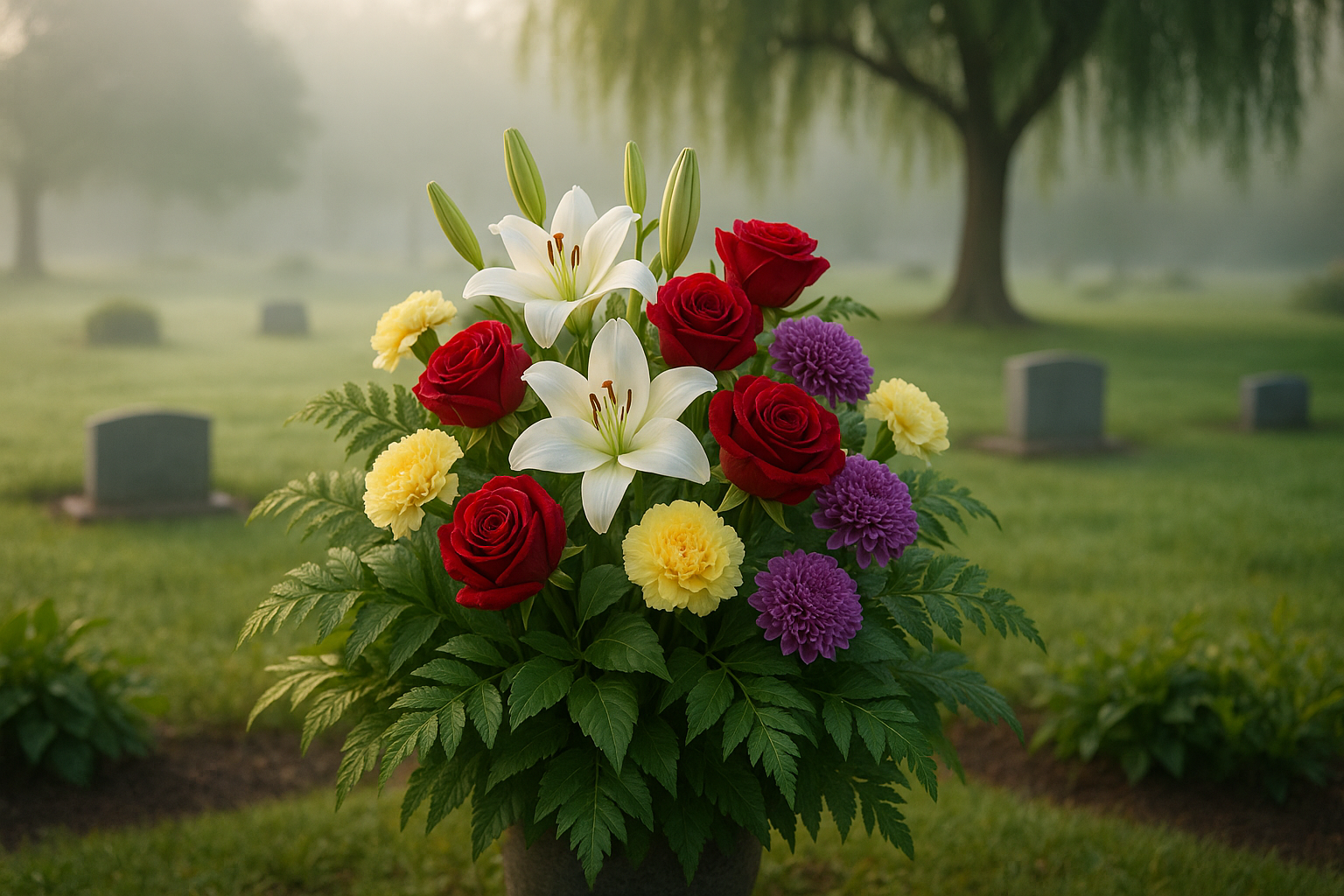In the tapestry of human experience, few events are as universally profound and deeply personal as funerals. These ceremonies, steeped in tradition and emotion, serve as pivotal moments for reflection, remembrance, and healing. While many of us are familiar with the black garments and somber settings typically associated with these occasions, there’s a world of vibrant symbolism woven into the fabric of funeral customs, one that transcends the simplistic dichotomy of black and white.
Have you ever stopped to consider the role of color in funeral rituals? Beyond the monochrome palette, plants and flowers introduce a spectrum of meanings and emotions, each hue carefully chosen to convey messages that words often cannot express. This article takes you on a journey into the heart of these vibrant expressions, exploring how different cultures harness the power of color in their funeral customs, and what these choices reveal about our shared human experience. 🌸
The symbolism of color is a language unto itself, with roots as ancient as humanity. At funerals, this language becomes a poignant tool, used to honor the departed and comfort the living. In the following sections, we will delve into the specific color meanings associated with plants in various cultures, examining how these hues reflect beliefs about life, death, and the afterlife.
Our exploration will begin with an examination of traditional Western funeral customs, where flowers like lilies and roses play prominent roles. We’ll look beyond the surface to uncover the meanings that these plants convey through their colors. Why is the white lily often seen as the flower of choice for mourning, and what does a red rose symbolize when laid upon a casket?
As we expand our gaze globally, we’ll uncover the vibrant funeral customs of Eastern cultures, where colors like yellow and gold often hold spiritual significance. In China, for example, white is associated with mourning, while in India, marigolds in shades of saffron and gold are prominent in funeral ceremonies. We’ll explore how these color choices not only reflect cultural values but also offer comfort and connection to those who are grieving. 🌼
Moreover, we will examine the rich tapestry of African funeral traditions, where color and symbolism are used to celebrate life and ancestral connections. In many African cultures, funerals are as much about the living as they are about the departed, with colors like purple and blue signifying royalty and transition. We’ll delve into how these vibrant displays challenge Western perceptions of mourning as a purely somber affair.
Additionally, the article will highlight indigenous funeral practices, shedding light on how native cultures employ color in their ceremonies. From the Navajo to the Māori, we’ll explore how plants and their colors are used not just to mourn, but to celebrate the cycle of life and the enduring connection between the earth and its people.
Finally, we’ll consider the modern adaptations and personalizations of these traditions, as contemporary funeral practices evolve to reflect individual preferences and multicultural influences. How do we see the blending of these traditions in today’s increasingly globalized society? Are there emerging trends in the use of color in funeral customs that suggest a shift in how we collectively approach death and remembrance?
By the end of our exploration, it will become clear that the symbolism of plants and their colors in funeral customs is a powerful testament to the enduring human need to express loss, celebrate life, and find meaning in the face of mortality. As we peel back the layers of tradition and symbolism, we hope to offer a deeper understanding of the rich tapestry of customs that color our farewells. 🌿
Join us as we journey “Beyond Black and White,” uncovering the vibrant world of color symbolism in funeral customs across cultures and generations. This exploration promises to be both enlightening and deeply moving, offering insights into how we honor those we’ve lost and find solace in the enduring beauty of nature’s palette.

Conclusion
As we conclude our exploration of color symbolism in funeral plants, it’s clear that every hue chosen for mourning rituals carries deep emotional and spiritual resonance. White lilies and chrysanthemums convey purity and the transcendence of the soul, while soft purples express dignity and eternal reflection. Greenery, ever-present, symbolizes renewal and the enduring cycle of life, offering solace amid grief.
The true meaning of color in funeral flora lies in its power to communicate what words cannot. 🌿💫 Each arrangement becomes a language of remembrance — blending cultural tradition with personal sentiment. In some traditions, crimson flowers signify love that survives death, while yellow or gold blooms speak of light, gratitude, and divine peace. Ultimately, understanding color symbolism in funeral plants reminds us that beauty and mourning coexist; through nature’s palette, we express reverence, hope, and the unbroken connection between the living and the departed.
Toni santos is a cultural storyteller and botanical history researcher devoted to uncovering the hidden narratives of cryptobotany and lost plant lore. With a lens focused on forgotten flora, Gabriel explores how ancient communities discovered, used, and ritualized plants — seeing them not merely as resources, but as vessels of meaning, identity, and ancestral memory.
Fascinated by mythical plants, vanished species, and secret ethnobotanical knowledge, Gabriel’s journey weaves through herbal manuscripts, oral traditions, and forgotten botanical practices passed down in fragments. Each story he tells is a reflection on the power of plants to heal, connect, and preserve cultural wisdom across time.
Blending ethnobotany, folklore studies, and cultural storytelling, Gabriel researches the plants, uses, and rituals that once shaped societies — uncovering how lost plant lore reveals deep interconnections between belief, nature, and survival. His work honors the healers, shamans, and herbalists who safeguarded this knowledge beyond the reach of written history.
His work is a tribute to:
-
The sacred role of plants in ancestral rituals
-
The beauty of forgotten botanical knowledge and uses
-
The enduring link between nature, culture, and myth
Whether you are passionate about ancient herbal traditions, curious about plant folklore, or intrigued by the mysteries of cryptobotany, Gabriel invites you on a journey through green lore and living memory — one plant, one ritual, one story at a time.





